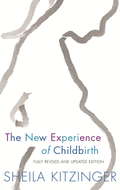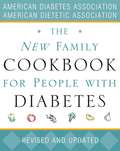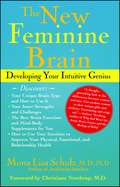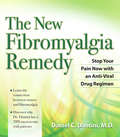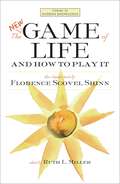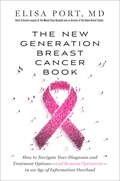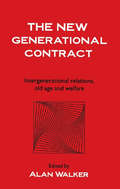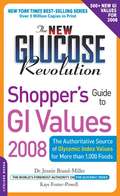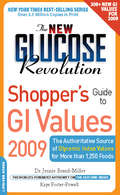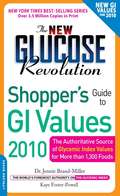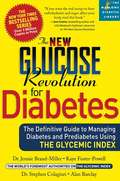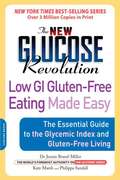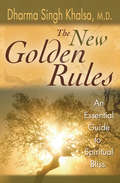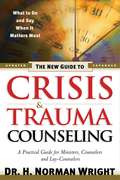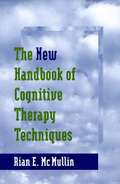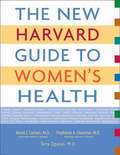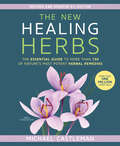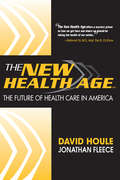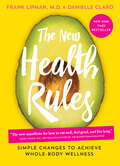- Table View
- List View
The New Existentialism
by Colin WilsonWilson's new existentialism is an attempt to show how recent developments in understanding of consciousness provides 20th and 21st century man with a relevant and sastisfying philosophy.
The New Experience of Childbirth
by Sheila KitzingerEverything the expectant mother needs to know about childbirth, from one of the foremost experts in the field.Childbirth is one of the most important and powerful events in a woman's life - and yet many women look back on it as an ordeal. Sheila Kitzinger, acknowledged around the world as an expert in the psychological, social and physiological aspects of birth, has rewritten her first book for today's women.Herself a mother of five, all born at home, she believes that birth can be a positive and deeply satisfying experience. She co-created the teacher training scheme of the National Childbirth Trust, and was the first person to introduce couple's classes, pregnancy and postnatal counselling, and birth companions to give personal support and help in childbirth. Written with warmth, elegance and understanding, THE NEW EXPERIENCE OF CHILDBIRTH explores emotional as well as the physical elements in childbirth and is essential reading for every mother- (and father-) to be.
The New Experience of Childbirth
by Sheila KitzingerEverything the expectant mother needs to know about childbirth, from one of the foremost experts in the field.Childbirth is one of the most important and powerful events in a woman's life - and yet many women look back on it as an ordeal. Sheila Kitzinger, acknowledged around the world as an expert in the psychological, social and physiological aspects of birth, has rewritten her first book for today's women.Herself a mother of five, all born at home, she believes that birth can be a positive and deeply satisfying experience. She co-created the teacher training scheme of the National Childbirth Trust, and was the first person to introduce couple's classes, pregnancy and postnatal counselling, and birth companions to give personal support and help in childbirth. Written with warmth, elegance and understanding, THE NEW EXPERIENCE OF CHILDBIRTH explores emotional as well as the physical elements in childbirth and is essential reading for every mother- (and father-) to be.
The New Family Cookbook for People with Diabetes
by American Dietetic AssociationGreat Tasting Food for People with Diabetes and their Families. Revised and updated to reflect the latest recommendations from The American Diabetes Association and The American Dietetic Association, The New Family Cookbook for People with Diabetes remains the most authoritative and comprehensive resource available for people with diabetes and their families. With more than 370 healthful and flavorful recipes accompanied by complete nutritional analysis, this book makes it easy to prepare satisfying and delicious meals that the whole family will enjoy. RECIPES INCLUDE: Whole Wheat Blueberry Rice Pancakes - Baked Orange French Toast Black Bean and Cilantro Spread - Honey-Mustard Chicken Wings - Curried Chicken Salad - Marinated Skirt Steak with Vegetables - Chutney Lamb Over Minted Couscous - Italian Turkey Sausage with Peppers and Onions - Baked Salmon with Horseradish Mayonnaise - Sugar Snap Peas with Basil and Lemon - Baked Potato Skins - Rum Baked Black Beans - Apple Raspberry - Crisp Port-Poached Pears - New York Cheesecake - Raisin Rice Pudding and many more.
The New Feminine Brain: How Women Can Develop Their Inner Strengths, Geniu
by Dr Christianne Northrup Mona Lisa SchulzEver wonder why most women can handle the kids and careers and the renovation but men can concentrate on either the newspaper or a game on TV? This is because female brains have more interconnections that allow them to multi-task and split their attention. The New Feminine Brain is the first book by a medical doctor, who is also a psychiatrist and a brain expert, to show how modern life challenges are physically rewiring the brain and to address the particular challenges that women face as a result. The female brain today is not your grandmother's brain - it has even more connections and skills, but with that can come more physical problems, including an increase in attention and memory deficits and chronic mood and health conditions. The New Feminine Brain combines the insights of Dr Schulz's research and stories of clinical experience as a neuropsychiatrist treating people with tough brain disorders with unique self-help and expert health advice. Readers will discover and cultivate their special genius and intuitive style with provocative self-tests, so they can hear and heal their depression, anxiety, attention, memory, and other brain problems. 'Rewiring' exercises, herbs and nutritional supplements will improve their physical, psychological and emotional health.
The New Fibromyalgia Remedy: Stop Your Pain Now with an Anti-Viral Drug Regimen
by Daniel C. DantiniDebilitating pain and tenderness in muscles, ligaments, and tendons are the typical symptoms of fibromyalgia, and this guide by a medical researcher of the disease dismisses traditional treatment—heat, exercise, and rest—in favor of antiviral medications that often provide immediate relief and eventual complete recovery. Offering new hope for advances in treatment, the discussion covers the difficulty of diagnosing fibromyalgia, the overlaps with chronic fatigue syndrome, the unrelatedness of arthritis, and the possibility that food allergies may trigger attacks. Patient success stories along the way encourage readers while data samples, references, and appendices provide clinical details.
The New Fit or Fat
by Covert BaileyThe revolutionary little book that changed America's thinking about eating, exercising and losing weight is now completely updated and expanded.
The New Game of Life and How to Play It: New Thought Classic With Beautiful Relaxing Mandala Zentangle Illustrations For Adult Coloring (Library of Hidden Knowledge)
by Florence Scovel ShinnThe fourth book in the Atria Books/Beyond Words Library of Hidden Knowledge, a modernized version of one of the first works to make the Law of Attraction accessible to the general public: timeless guidance on the power of prosperity, intuition, relationships, and other perennial topics.The game of life is a game of boomerangs. Our thoughts, deeds, and words return to us sooner or later with astounding accuracy. Florence Scovel Shinn, a prominent and provocative twentieth-century leader of the New Thought movement, was known for her sage guidance on prosperity, intuition, relationships, and fulfillment. Shinn’s distinct philosophy and practical approach included enlightening affirmations, timeless anecdotes, and action-based advice that are still relevant for the fast-paced world of today. In addition to Shinn’s original writings, The New Game of Life features Dr. Ruth L. Miller’s contemporary translations as well as additional exercises and summaries to fully engage a new generation of thinkers. *** Includes Original Text Most people consider life a battle, but it is not a battle, it is a game. Florence Scovel Shinn New Thought leader Florence Scovel Shinn’s The Game of Life and How to Play It, was originally published in 1925 and still stands today as one of the earliest and most accessible introductions to the Law of Attraction, the backbone of the bestselling book and movie The Secret. Now, Dr. Ruth L. Miller, New Thought minister and series editor of the Library of Hidden Knowledge, takes you to the very heart of Shinn’s original wisdom through insightful modern interpretations. With incredible vision, moving stories, and accessible “game” plans for success, The New Game of Life and How to Play It deftly guides you toward a life of prosperity and fulfillment.
The New Generation Breast Cancer Book
by Dr Elisa PortFrom an expert in the field comes the definitive guide to managing breast cancer in the information age--a comprehensive resource for diagnosis, treatment, and peace of mind. The breast cancer cure rate is at an all-time high, and so is the information, to say nothing of the misinformation, available to patients and their families. Online searches can lead to unreliable sources, leaving even the most resilient patient feeling uneasy and uncertain about her diagnosis, treatment options, doctors, side effects, and recovery. Adding to a patient's anxiety is input from well-meaning friends and family, with stories, worries, and opinions to share, sometimes without knowing the details of her particular case, when in reality breast cancer treatment has gone well beyond a "one size fits all" approach. Elisa Port, MD, FACS, chief of breast surgery at The Mount Sinai Hospital and co-director of the Dubin Breast Center in Manhattan, offers an optimistic antidote to the ocean of Web data on screening, diagnosis, prognosis, and treatment. Inside you'll discover * the various scenarios when mammograms indicate the need for a biopsy * the questions to ask about surgery, chemotherapy, radiation, and breast reconstruction * the important things to look for when deciding where to get care * the key to deciphering complicated pathology reports and avoiding confusion * the facts on genetic testing and the breast cancer genes: BRCA-1 and BRCA-2 * the best resources and advice for those supporting someone with breast cancer From innovations in breast cancer screening and evaluating results to post-treatment medications and living as a breast cancer survivor, Dr. Elisa Port describes every possible test and every type of doctor visit, providing a comprehensive, empathetic guide that every newly diagnosed woman (and her family) will want to have at her side.Praise for The New Generation Breast Cancer Book "One book you need . . . If you're considering your options for treatment or know someone who is, this step-by-step guide, The New Generation Breast Cancer Book, is essential reading."--InStyle "Elisa Port, M.D., is the doctor every patient deserves: brilliant and compassionate. Her book will be a sanity saver and, quite possibly, a life saver."--Geralyn Lucas, author of Why I Wore Lipstick to My Mastectomy "The New Generation Breast Cancer Book helps you sort through all the information you've gathered, clarify the terminology, consider the options, and make the right decisions for your unique case."--Edie Falco "A lifeline for many women in need of today's most up-to-date choices for treatment . . . Everyone should read this book for themselves, their mothers, grandmothers, daughters, and friends."--Kara DioGuardi, Grammy-nominated songwriter, music executive, and Arthouse Entertainment co-founder"The book is teeming with easy-to-understand medical explanations, tips, takeaways, and pro-and-con discussions of various courses of action. Port also includes two extremely useful appendices that respectively take on common myths and answer questions frequently asked by friends and family. This is a vital read that will empower men and women alike."--Publishers WeeklyFrom the Trade Paperback edition.
The New Generational Contract: Intergenerational Relations And The Welfare State
by Alan WalkerThis authoritative text offers the first comprehensive analysis of intergenerational relations and social welfare. It examines both the micro-sociological relations within the family and the social contract which forms the backbone of the welfare state.; This book is intended to appeal to undergraduates and postgraduates in sociology, social policy and medicine and it will also be particularly useful for professional courses such as nursing, social work and gerontology.
The New Glucose Revolution Shopper's Guide to GI Values 2008
by Dr Jennie Brand-Miller Kaye Foster-PowellWhether you're looking to lose weight, help manage conditions like diabetes or hypertension, or simply eat for lifelong good health, adopting a low-GI diet is the scientifically proven way to reach your goal. This 2008 guide, updated with more than 500 new foods, makes it easier than ever to select smart, low-GI choices for all your meals. Featured are: The GI value for over 1,000 popular foods and prepared meals-twice as many as 2007 All-new expanded nutrient data-including serving size, calories, fat, saturated fat, carbohydrate, fiber, and sodium per serving of each food Advice on shopping and eating out to guide your daily food choices Essential advice for incorporating low-GI foods into a gluten-free diet
The New Glucose Revolution Shopper's Guide to GI Values 2008
by Dr Jennie Brand-Miller Kaye Foster-PowellWhether you’re looking to lose weight, help manage conditions like diabetes or hypertension, or simply eat for lifelong good health, adopting a low-GI diet is the scientifically proven way to reach your goal. This 2008 guide, updated with more than 500 new foods, makes it easier than ever to select smart, low-GI choices for all your meals. Featured are: The GI value for over 1,000 popular foods and prepared meals-twice as many as 2007 All-new expanded nutrient data-including serving size, calories, fat, saturated fat, carbohydrate, fiber, and sodium per serving of each food Advice on shopping and eating out to guide your daily food choices Essential advice for incorporating low-GI foods into a gluten-free diet
The New Glucose Revolution Shopper's Guide to GI Values 2008
by Kaye Foster-Powell Jennie Brand-MillerFully updated to include the latest GI Values and G symbol program participants for 2008! the GI tables - the comprehensive lists of foods and their GI values - are the key to unlocking the fantastic health benefits of a low GI diet. This fully revised edition includes all the very latest GI values in an easy-to-use format. As well as the GI values, the tables include comments to help you select the right foods for a well-rounded, healthy diet. Symbols indicate those foods which are 'star performers' - possessing a low GI and providing you with the best overall nutritional value. If you've ever asked 'What is the GI value of. . . '' then this is the book for you. This handy pocket-size guide also makes shopping easy with helpful hints for navigating the supermarket aisles and grocery lists to help you choose the right low GI foods. There's also a guide to the best low GI foods when eating out. This is the best place to go for GI values. the GI values are brought to you from the Sydney University Glycemic Index Research Service (SUGiRs) which is at the forefront of glycemic index testing.
The New Glucose Revolution Shopper's Guide to GI Values 2009
by Kaye Foster-Powell Jennie Brand-MillerWhether you're grocery shopping, planning dinner, eating out, or meeting with your nutritionist or dietitian, the fourth annual edition of the Shopper's Guide to GI Values 2009-previous editions of which have sold more than 140,000 copies-is a must for everyone seeking healthier eating habits. Newly revised and updated, the convenient, at-a-glance tables make this the one necessary guide for people following the glycemic index (GI) for health conditions such as diabetes, heart disease, or PCOS; to lose weight; or to improve their overall well-being and fitness. Shopper's Guide is the only annually updated book of GI values, featuring more than 1,200 foods and their GI values and comprehensive nutritional data for calories, fat, saturated fat, cholesterol, fiber, and sodium.
The New Glucose Revolution Shopper's Guide to GI Values 2010
by Dr Jennie Brand-Miller Kaye Foster-PowellWhether you're looking to lose weight, help manage conditions like diabetes or hypertension, or simply eat for lifelong good health, adopting a low-GI diet is the scientifically proven way to reach your goal. This 2008 guide, updated with more than 500 new foods, makes it easier than ever to select smart, low-GI choices for all your meals. Featured are: The GI value for over 1,000 popular foods and prepared meals-twice as many as 2007 All-new expanded nutrient data-including serving size, calories, fat, saturated fat, carbohydrate, fiber, and sodium per serving of each food Advice on shopping and eating out to guide your daily food choices Essential advice for incorporating low-GI foods into a gluten-free diet
The New Glucose Revolution Shopper's Guide to GI Values 2010: The Authoritative Source of Glycemic Index Values for More Than 1,300 Foods
by Kaye Foster-Powell Jennie Brand-MillerReference book for 1300 glycemic index values,
The New Glucose Revolution for Diabetes: The Definitive Guide to Managing Diabetes and Prediabetes Using the Glycemic Index (Marlowe Diabetes Library)
by stephen Barclay Kaye Alan Diet Brand-Miller Dr Jennie Foster-Powell M. Nutr ColagiuriThe New Glucose Revolution for Diabetes is the first comprehensive guide to using the glycemic index to control type 1 diabetes, type 2 diabetes, prediabetes, and more. The book features the latest, most accurate information with new findings by the authors. It includes GI-based recipes and menus for type 1, type 2, prediabetes, gestational diabetes, and juvenile diabetes, as well as related conditions like obesity and celiac disease, plus practical dietary guidance on sugar, sweeteners, alcohol, snacking, and eating out.
The New Glucose Revolution: Low GI Gluten-Free Eating Made Easy
by Jennie Brand-Miller Kate Marsh Philippa SandallMore than two million North Americans have celiac disease and must follow a gluten-free diet-but the absence of grains and the higher fat and sugar content of many gluten-free products can cause health problems and nutrient deficiencies. Now, The New Glucose Revolution Low GI Gluten-Free Eating Made Easy simplifies the challenges of a gluten-free diet-and emphasizes the lifelong health benefits of low-GI, gluten-free eating. Widely recognized as the most significant dietary finding of the last 25 years, the glycemic index (GI) is an easy-to-understand measure of how foods affect blood glucose levels. Low-GI diets improve health and weight control, lower "bad” cholesterol, and help prevent or reduce your risk of type 2 diabetes, heart disease, cancer, and other chronic diseases. This clear, accessible guide has everything you need to know for healthful gluten-free eating, including Seven simple dietary guidelines for eating gluten-free and low GI A guide to finding and buying gluten-free products Low-GI substitutes for common high-GI (albeit gluten-free) foods Cutting-edge scientific findings on the benefits of eating low-GI foods 70 delicious, easy-to-prepare recipes include dishes for each meal of the day GI values of hundreds of popular gluten-free foods The New Glucose Revolution Low GI Gluten-Free Eating Made Easy is the definitive resource to healthy living for everyone with celiac disease, gluten intolerance, or other wheat sensitivities.
The New Golden Rules: An Essential Guide To Spiritual Bliss
by Dharma Singh KhalsaDiving deep into the depths of practical spiritual thought, this book by visionary physician and teacher Dharma Singh Khalsa, M.D., presents simple ways to reach the state of spiritual bliss.
The New Guide to Crisis and Trauma Counseling
by H. Norman WrightAn informative and practical guide for beginning or lay counselors and those in situations that require immediate action in emergency situations. This relaunch of Crisis Counseling is upgraded and expanded, with new material and anecdotes in chapters that cover the areas of crisis intervention, how to counsel the depressed, the suicidal, and those going through divorce, children and adolescents crisis, and more. This classic volume on the trauma of loss and grief provides excellent instruction on what to do for others in the first 72 hours following a crisis for those who are helpless to help themselves.
The New Handbook of Cognitive Therapy Techniques
by Rian E. McmullinFor therapists with a good grounding in the approach, Hawaii-based clinical psychologist McMullin describes, explains, and demonstrates over 100 techniques of cognitive therapy. For each he provides the theoretical basis, a thumbnail description, case examples, and resources for further information. He here adds seven new chapters to his 1986 Handbook of Cognitive Therapy Techniques that explain how to teach basic concepts, uncover harmful schemas, and resynthesize historical and cultural beliefs. Annotation c. Book News, Inc., Portland, OR (booknews.com)
The New Harvard Guide to Women's Health
by Karen J. Carlson Stephanie A. Eisenstat Terra ZiporynWith the publication in 1996 of The Harvard Guide to Women's Health, women seeking answers to questions about their health had access to the combined expertise of physicians from three of the world's most prestigious medical institutions: Harvard Medical School, Massachusetts General Hospital, and Brigham and Women's Hospital. With complete information on women's health concerns, physical and behavioral, this A to Z reference quickly became a definitive resource, praised especially for its coverage of topics not previously considered under the umbrella of women's health. The New Harvard Guide to Women's Health reunites the authors to bring a valued health reference up to date for a new generation--and for those women who have come to rely on the Harvard Guide and are now wondering what to do about their health as they enter a new stage of life, asking questions like the following: I've been on hormone replacement therapy. Should I stop? How? Could this rash be lupus? I've been on the Pill. What is my risk for stroke? Fat is bad, fat is good: What should I believe? And what's left to eat? When does ordinary worry become chronic anxiety? What screening tests do I need now? In addition to revised recommendations reflecting the current medical thinking on menopause and hormone replacement therapy, the New Harvard Guide includes updated recommendations about cardiac health and heart disease--the #1 killer of women in the United States entries reflecting recent advances in the understanding and treatment of autoimmune diseases better coverage of health concerns throughout a woman's life span, from her first period to menopause and beyond, with a new entry on perimenopause expanded nutritional recommendations, including a unique chart of the U. S. government's Daily Reference Intakes for micronutrients, broken down for teens and women whose needs may differ because they are pregnant, breastfeeding, or postmenopausal updated information on over-the-counter medications, prescription drugs, procedures, screenings, and diagnostic tests
The New Healing Herbs: The Essential Guide to More Than 130 of Nature's Most Potent Herbal Remedies
by Michael CastlemanStraight from nature's medicine cabinet, the latest herbal discoveries that cure hundreds of health concerns without the dangerous side effects or high cost of prescription drugs.When compared to prescription drugs, herbal healing is both safer and more cost effective. In the fourth edition of The New Healing Herbs, you get access to the latest, most up-to-date information about herbal remedies for cures to nausea, the common cold, diabetes, cancer, allergies, back pain, and more. This new edition includes five new herbs, the result of author Michael Castleman's endless research and dedication to holistic healing. Taking a folklore-meets-science approach, you'll also explore the rich history of herbal medicine traditions.Featuring 135 of the most widely used medicinal herbs, including cannabis, The New Healing Herbs shows you which herbal remedy to take for each condition, how it's taken, what interactions to watch for, and where to buy the featured herb. The easy-to-use Cure Finder organizes herbs by health condition, healing actions, and alternative uses, guiding you to the right herbal remedy for your ailment.With The New Healing Herbs, you'll find nature's remedy for health, vibrancy, and happiness.
The New Health Age
by David Houle Jonathan FleeceFrom leading futurist David Houle (recently named "Speaker of the Year" by Vistage International) and leading healthcare attorney Jonathan Fleece, comes this surprising, innovative look at the future of healthcare--and how we can lead the successful reorganization of healthcare in America.
The New Health Rules: Simple Changes to Achieve Whole-Body Wellness
by Frank Lipman Danielle ClaroNow in paperback! Frank Lipman, M.D., is one of the country’s top pioneers in the field of integrative medicine. A leading international speaker on health and wellness, he has been featured in Men’s Health, Vogue, Men’s Journal, Redbook, and Martha Stewart Living. He is a regular contributor to Goop and The Huffington Post, and he writes a daily blog for his own site, Dr.FrankLipman.com. Danielle Claro is a writer, editor, longtime yogi, and former professional dancer. She has ghostwritten two New York Times bestsellers, launched an indie lifestyle magazine called Breathe, and served as special projects director at Condé Nast’s Domino magazine. She’s currently deputy editor of Real Simple.

